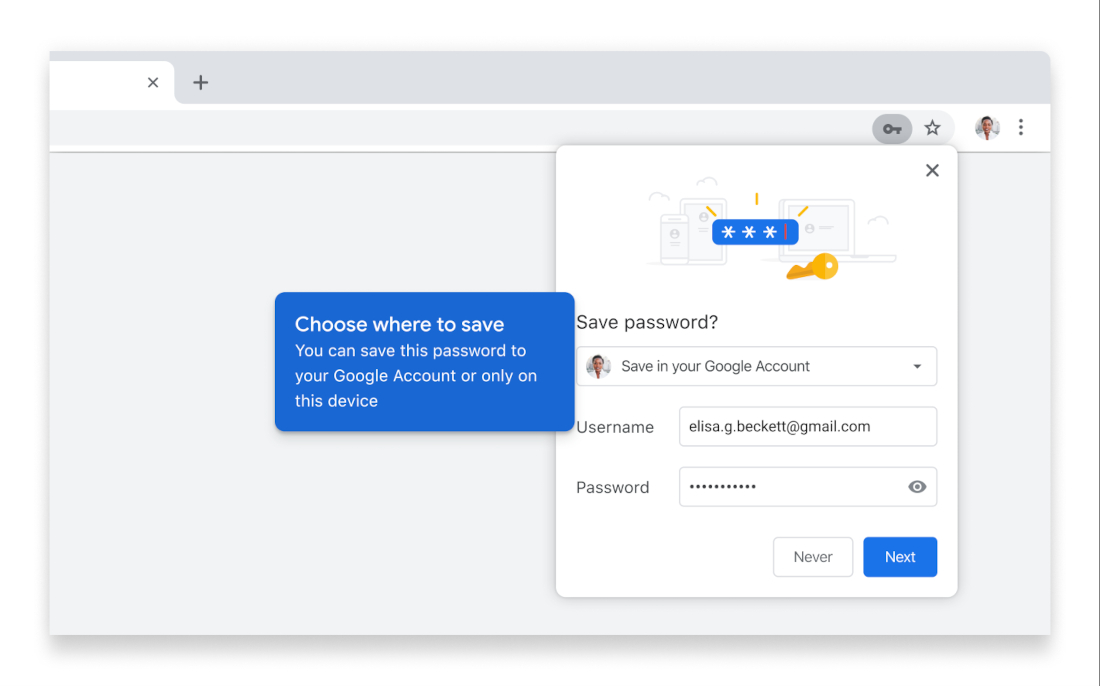

- Google chrome password manager how to#
- Google chrome password manager update#
- Google chrome password manager android#
Open Chrome and click the three dot menu at the top right.
Google chrome password manager how to#
Here’s how to run the tool to check for unsafe passwords. Furthermore, it helps you generate unique passwords for every. You should also get a notification in your Google account if any credentials are discovered in a recent breach. Google account password manager is set to function in chrome to keep safe all your passwords. You’ll also see details if the passwords you’re using are too weak. The “Check passwords” tool will quickly scan all your credentials to verify if they’ve been part of a known breach.
Google chrome password manager update#
You’ll then need to update the change in Google Password Manager, which we’ll cover under “ How To Edit Passwords.”Īlso read: How to Set Up Parental Controls in Google Chrome How to Check Chrome Passwords for BreachesĪnother overlooked benefit of Google Password Manager is to check whether your stored passwords are still safe to use. Then, you can change your account’s password to the new stronger password. Log in to your account as usual using your saved credentials. If you want to generate strong passwords for existing accounts, right-click any password field to get a suggested password. Your credentials are then saved to the password manager.
Proceed with the account creation process. Related: How to use iCloud Passwords on Chrome for Windows. Google chrome password manager android#
It is available on all Apple devices, and now also on Windows.On Android and Chrome, Google Password Manager is the default solution to store these. If you’re not logged in, this will be a default user icon. Keychain is the default, built-in solution by Apple to safely store your account passwords and login details.
Click the profile icon at the top right. Any device that uses Chrome can access the password manager since it’s a built-in feature of the Chrome browser. Google Password Manager is cross-platform. Once your details are saved, all you have to do is visit the website you want to log in to and Google fills in the login details automatically.Īlso read: Chrome Settings 101: How to Customize Google Chrome How to Open Google Password Manager Whether you have a dozen or hundreds, you can store them all in the same password manager. There isn’t a limit on the number of credentials you can save. If you agree, Google saves your user name, email address (if applicable), and password. With Password Manager active, whenever you enter login information, Google asks if you want to save it. For example, passwords saved on your Android device in Chrome carry over to the Chrome browser on your desktop, while you’re signed in. However, signing in and saving your login credentials allows you to sync them between devices. Technically, you don’t even need a Google account. The old tedious way via OMA-URI is no longer necessary.You need only two things to use Google Password Manager – the Chrome browser and a Google account. It's that easy to create and manage Google Chrome policies with Intune. Here are my settings in a table so that you can search for them when creating: settingĮnable reporting of usage and crash-related dataĮnable saving passwords to the password managerĬontinue running background apps when Google Chrome is closedĮnable component updates in Google Chrome An overview of the settings made then also appears: I don't want this in my security settings and select the first subfolder here.Īfter defining the settings, you assign the policy to at least one group so that it is applied. Only use the second "Default Settings (user can override)" if the user is actually allowed to adjust the settings. Google Chrome comes with its very own built-in password manager.That’s very convenient if you have a Google Account since you get to sync your passwords between devices.And if you use Chrome on. We correctly give the policy a descriptive name and description. Here you select 'Windows 10 and later' as platform and 'Administrative Templates' under Templates. You can find this under "Computer Configuration/Google". You create the policy in the Endpoint Manager under 'Devices> Windows> Configuration profiles' +Create profile. In the next step we can then make the desired settings. Here you select "Windows 10 and later" as platform and "Administrative Templates" under Templates. You create the policy in the Endpoint Manager under " Devices> Windows> Configuration profiles" +Create profile. The guidelines work with both the Google Chrome Enterprise and Consumer versions.





 0 kommentar(er)
0 kommentar(er)
